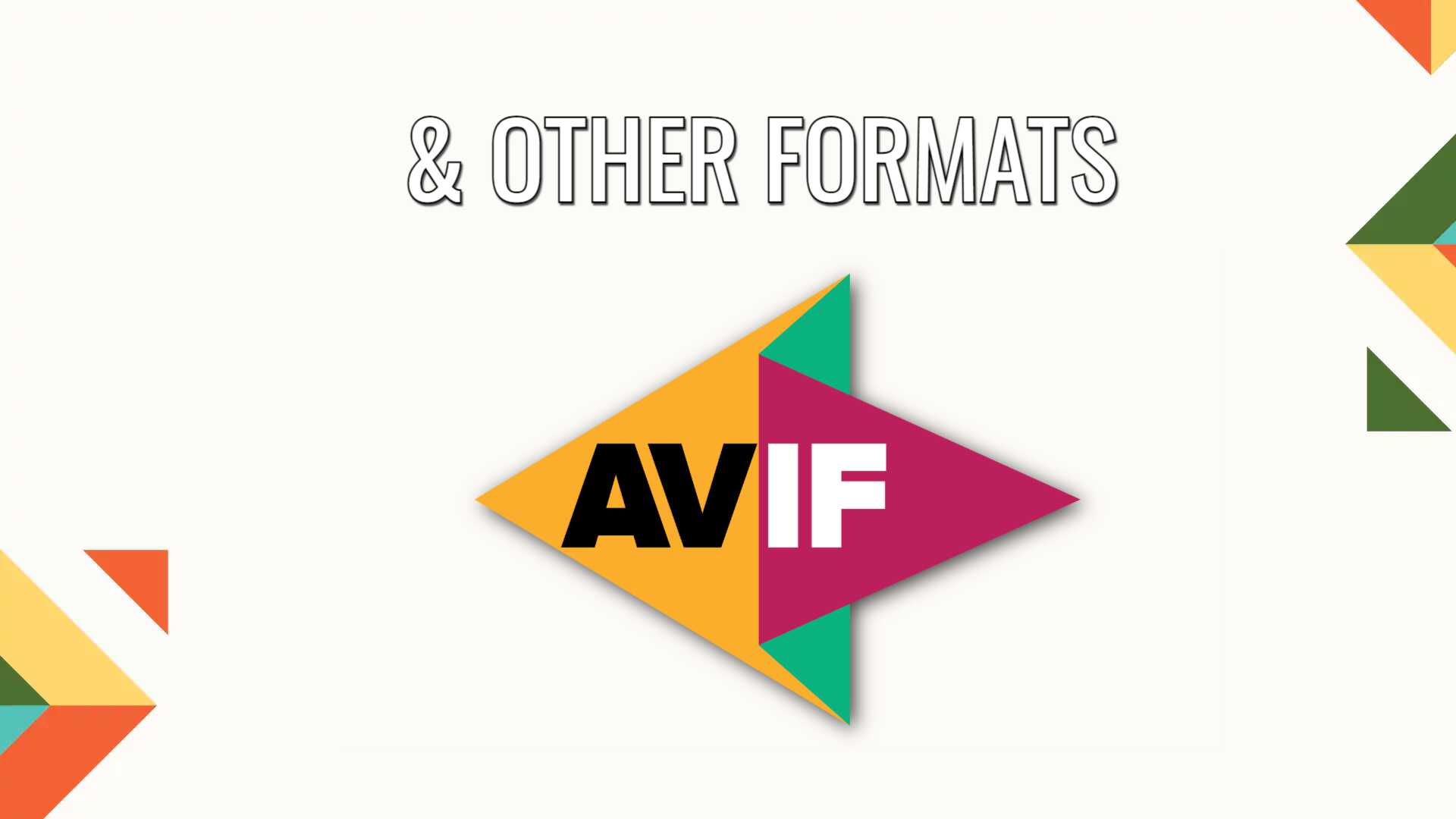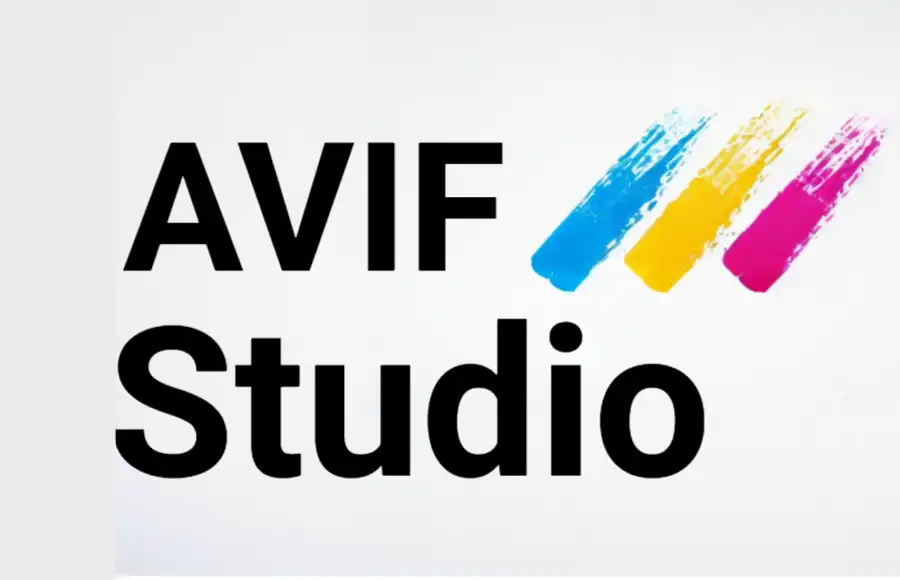Is AVIF Based on Other Formats?

AVIF, or AV1 Image File Format, is indeed based on other formats. AVIF is derived from the AV1 video codec, which itself is a successor to the VP9 codec developed by Google. AV1 (AOMedia Video 1) is an open, royalty-free video coding format designed for internet video streaming and other applications. It was developed by the Alliance for Open Media (AOMedia), a consortium of tech companies including Google, Apple, Microsoft, and others.
AVIF leverages the AV1 codec's compression efficiency and modern coding techniques to provide high-quality images with smaller file sizes compared to other image formats like JPEG, PNG, and even WebP. The format achieves this through advanced techniques such as intra-frame, inter-frame, and spatial prediction, as well as improved entropy coding and transform coding methods.
This article provides an in-depth overview of AVIF, its advantages over other image formats, its technical aspects, and its potential impact on web development and content delivery. It also discusses how AVIF is built upon the foundation of the AV1 video codec and its compatibility with modern web browsers and image editing tools.
Frequently Asked Questions
- What are the origins of AVIF and its relationship with other image formats?
- How does AVIF differ from traditional image formats like JPEG and PNG?
- What role does the AV1 codec play in the development of AVIF?
- Are there any precursor formats that influenced the creation of AVIF?
- What are the technical foundations underlying AVIF's design?
- How does AVIF achieve its high compression efficiency compared to other formats?
- What advantages does AVIF offer over established image formats?
- How does AVIF support modern rendering techniques and display capabilities?
- How does AVIF handle color depth, profiles, and other visual aspects?
What are the origins of AVIF and its relationship with other image formats?
AVIF, the AV1 Image File Format, traces its origins back to the development of the AV1 video codec by the Alliance for Open Media (AOMedia). AOMedia, a consortium of tech companies including Google, Apple, Microsoft, and others, aimed to create an open, royalty-free video coding format suitable for internet video streaming and other applications. AV1 was designed to succeed the VP9 codec and to address its limitations while also competing with established standards like H.264 and H.265.
AVIF emerged as an extension of the AV1 codec's capabilities to handle still images. Leveraging the same compression techniques and principles used in AV1, AVIF offers efficient compression for high-quality images while maintaining compatibility with modern web browsers and image editing software. Its relationship with other image formats lies in its goal to surpass them in terms of compression efficiency, image quality, and feature support, positioning AVIF as a promising successor to formats like JPEG and PNG.
How does AVIF differ from traditional image formats like JPEG and PNG?
AVIF differs from traditional image formats such as JPEG and PNG in several key aspects. Firstly, it utilizes the AV1 video codec's advanced compression techniques, including intra-frame, inter-frame, and spatial prediction, to achieve higher compression efficiency without compromising image quality. This allows AVIF to produce significantly smaller file sizes compared to JPEG and PNG while preserving more details and color accuracy.
Secondly, AVIF supports both lossy and lossless compression modes, providing flexibility for different use cases. Lossy compression is suitable for scenarios where reducing file size is crucial, such as web image delivery, while lossless compression preserves every detail of the original image, making it ideal for professional photography and archival purposes.
Additionally, AVIF offers support for modern image features such as High Dynamic Range (HDR) and Wide Color Gamut (WCG), which are not fully supported or optimized in traditional formats like JPEG and PNG. This allows AVIF to accurately represent vibrant colors and subtle gradients, making it a preferred choice for high-fidelity image rendering.
What role does the AV1 codec play in the development of AVIF?
The AV1 codec plays a central role in the development of AVIF as it serves as the foundation for the format's compression algorithms and techniques. AV1, developed by the Alliance for Open Media (AOMedia), is a next-generation video codec designed to provide high compression efficiency, improved image quality, and better support for modern video features compared to previous standards like VP9 and H.264.
AVIF leverages the compression capabilities of the AV1 codec to efficiently encode still images while maintaining compatibility with existing AV1 decoders. This allows AVIF to benefit from ongoing optimizations and advancements in the AV1 codec, ensuring that it remains competitive and future-proof in the rapidly evolving landscape of multimedia compression technologies.
Furthermore, the development of AVIF alongside AV1 enables synergy between the two formats, facilitating seamless integration and interoperability in multimedia workflows. As a result, AVIF inherits many of the performance and quality advantages of the AV1 codec, making it a compelling choice for image compression in various applications.
Are there any precursor formats that influenced the creation of AVIF?
Yes, there are precursor formats that influenced the creation of AVIF. One notable predecessor is the WebP image format, developed by Google as a modern alternative to JPEG and PNG. WebP introduced advanced compression techniques and support for features like transparency and animation, laying the groundwork for subsequent innovations in image compression.
Another precursor is the VP9 video codec, which was developed by Google and later served as the basis for the AV1 codec. VP9 introduced improvements in compression efficiency and quality over previous standards like H.264, paving the way for the development of AV1 and its derivatives like AVIF.
Furthermore, advancements in video compression standards such as H.265 (HEVC) and the ongoing evolution of multimedia technologies have contributed to the development of AVIF by providing insights and techniques for improving compression efficiency and image quality.
Overall, while AVIF represents a significant advancement in image compression, it builds upon the foundations established by precursor formats and standards, leveraging their innovations and lessons learned to push the boundaries of image encoding further.
What are the technical foundations underlying AVIF's design?
AVIF's design is built upon several technical foundations that enable its high compression efficiency and advanced features. At its core, AVIF utilizes the AV1 video codec, which employs a combination of intra-frame, inter-frame, and spatial prediction techniques to reduce redundancy and achieve better compression ratios compared to traditional image formats.
Additionally, AVIF incorporates modern compression algorithms and tools, such as entropy coding and transform coding, to further optimize compression efficiency while maintaining image quality. These algorithms leverage insights from the fields of signal processing, data compression, and video coding to achieve superior performance.
Furthermore, AVIF supports features like HDR (High Dynamic Range) and WCG (Wide Color Gamut), which enable it to accurately represent a broader range of colors and brightness levels compared to legacy formats like JPEG and PNG. This is achieved through support for higher bit depths, chroma subsampling, and color profiles, allowing AVIF to handle diverse visual content with precision and fidelity.
Overall, AVIF's technical foundations combine innovations in video compression, signal processing, and color science to deliver a versatile and efficient image format suitable for a wide range of applications, from web content delivery to professional photography.
How does AVIF achieve its high compression efficiency compared to other formats?
AVIF achieves its high compression efficiency through a combination of advanced compression techniques and modern coding algorithms. Firstly, AVIF leverages the AV1 video codec's intra-frame, inter-frame, and spatial prediction methods to reduce redundancy and capture spatial and temporal correlations within image sequences. This enables AVIF to achieve better compression ratios than traditional image formats like JPEG and PNG.
Secondly, AVIF incorporates sophisticated entropy coding techniques, such as context-adaptive binary arithmetic coding (CABAC), which further optimize compression efficiency by encoding symbols based on their context and probability distributions. These techniques enable AVIF to achieve better entropy coding performance compared to legacy formats.
Additionally, AVIF supports modern transform coding methods, such as the Discrete Cosine Transform (DCT) and the Discrete Wavelet Transform (DWT), which efficiently represent image data in the frequency domain and facilitate compression while preserving image quality. By combining these techniques, AVIF is able to produce smaller file sizes without significant loss of visual fidelity, making it an attractive option for image compression in various applications.
What advantages does AVIF offer over established image formats?
AVIF offers several advantages over established image formats like JPEG and PNG. Firstly, it provides superior compression efficiency, resulting in significantly smaller file sizes for the same level of image quality. This is achieved through advanced compression techniques derived from the AV1 video codec, enabling AVIF to outperform traditional formats in terms of bandwidth usage and storage requirements.
Secondly, AVIF supports both lossy and lossless compression modes, giving users flexibility to choose the compression level that best suits their needs. Lossy compression is ideal for scenarios where reducing file size is critical, such as web image delivery, while lossless compression preserves every detail of the original image, making it suitable for professional photography and archival purposes.
Additionally, AVIF offers support for modern image features such as HDR (High Dynamic Range) and WCG (Wide Color Gamut), allowing it to accurately represent vibrant colors and subtle gradients that may be lost or distorted in legacy formats. This makes AVIF a preferred choice for applications requiring high-fidelity image rendering and color accuracy.
Overall, the advantages of AVIF include superior compression efficiency, support for both lossy and lossless compression modes, and compatibility with modern image features, positioning it as a promising alternative to established image formats for various applications.
How does AVIF support modern rendering techniques and display capabilities?
AVIF supports modern rendering techniques and display capabilities through its compatibility with advanced image features such as HDR (High Dynamic Range) and WCG (Wide Color Gamut). By supporting higher bit depths, chroma subsampling, and color profiles, AVIF enables more accurate representation of colors and brightness levels compared to legacy formats like JPEG and PNG.
Furthermore, AVIF's efficient compression algorithms and smaller file sizes make it well-suited for delivery over the internet and other bandwidth-constrained environments. This allows content creators to deliver high-quality images with reduced loading times and bandwidth usage, enhancing the user experience across various devices and platforms.
Additionally, AVIF's support for features like alpha transparency and multiple image sequences enhances its versatility for multimedia applications, enabling developers to create rich and interactive content without compromising on image quality or performance.
Overall, AVIF's support for modern rendering techniques and display capabilities, combined with its superior compression efficiency, make it a compelling choice for a wide range of applications, from web content delivery to digital photography and art.
How does AVIF handle color depth, profiles, and other visual aspects?
AVIF handles color depth, profiles, and other visual aspects through support for a wide range of color spaces, bit depths, and chroma subsampling techniques. This allows AVIF to accurately represent colors and brightness levels across different display devices and environments, ensuring consistent and vibrant image rendering.
Additionally, AVIF supports advanced color features such as HDR (High Dynamic Range) and WCG (Wide Color Gamut), which enable it to capture and display a broader range of colors and brightness levels compared to legacy formats like JPEG and PNG. This makes AVIF well-suited for applications requiring high-fidelity image rendering and color accuracy, such as digital photography and cinematography.
Furthermore, AVIF's support for alpha transparency and multiple image sequences enhances its versatility for multimedia applications, enabling developers to create dynamic and interactive content while maintaining optimal compression efficiency and image quality.
Overall, AVIF's handling of color depth, profiles, and other visual aspects reflects its commitment to providing a modern and flexible image format that meets the evolving needs of content creators and consumers in today's digital landscape.
